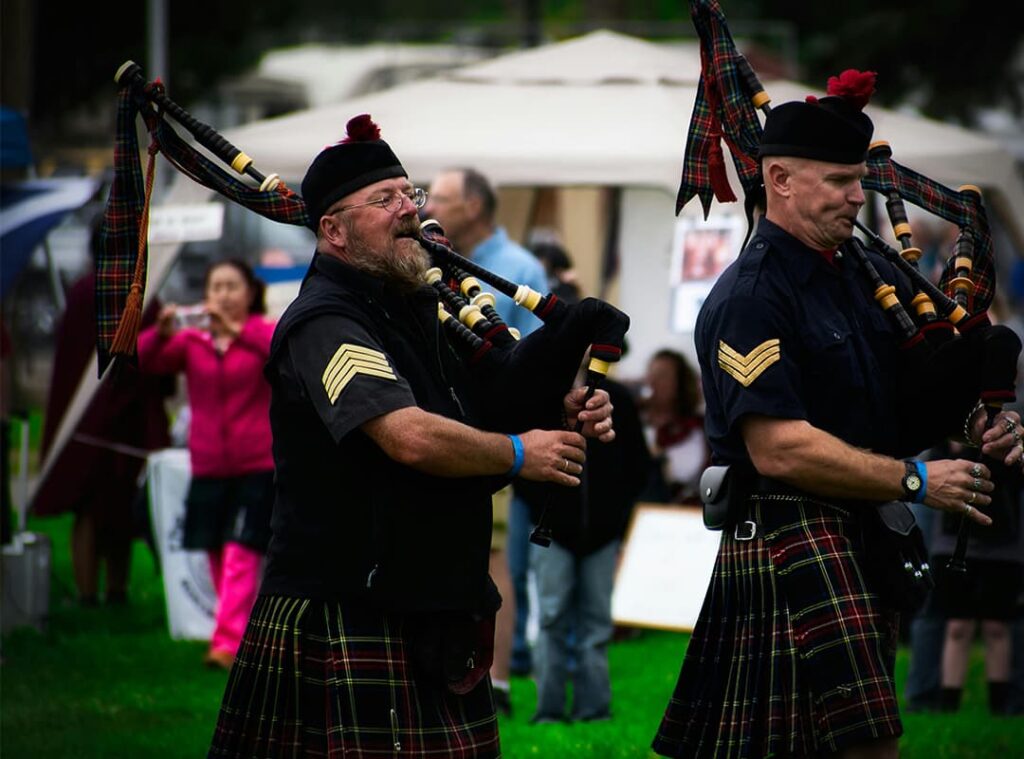What is the first thing that comes to mind at the mention of proud little Scotland? Most likely, it’s heathland, rugged mountains, cloudy skies, icy winds and Scotsmen in plaid woolen kilts. And without fail, the distinctive loud sounds of bagpipes. The sound of bagpipes means a lot to the Scots – a link to their roots, the voice of the country’s ancient history, giving them the right to be proud of their ancestry. But the monotonous sounds of the bagpipes also leave most outsiders indifferent.
Bagpipes
The bagpipe has been Scotland’s national instrument for centuries and remains popular to this day. However, it was not invented by the Scots – it was once brought to the Foggy Albion through Ireland by the Vikings. But it was in Scotland that this “pipe-bottle” became as much a national symbol as the kilt. This is a very ancient musical instrument, the origin of which goes back to the East. In Europe, the bagpipe appeared only in the Middle Ages. In those times the instrument looked a bit different: the old bagpipes had two pipes and did not look as beautiful as modern instruments decorated with national decorations. The Scots worked on it themselves – they added another pipe and provided the bag with a piece of plaid fabric.
It seems incredible to contemporaries, but the original purpose of the future national instrument was quite different. Since the bagpipe produces a loud and specific sound, which can be heard at a distance of up to three kilometers, it was used for military purposes – as a signaling instrument.
Like other Scottish national instruments, the bagpipe is also made from improvised materials. It is usually made of a sheep or goat skin turned inside out, from which a blind sack is sewn, into which five pipes are inserted. The bagpiper blows air into the bag through the upper tube, the lower tube has holes cut in it to change the tonality of the sounds, and the other three tubes produce the sounds.
The sounding bagpipe is hard to confuse with any other instrument, which certainly makes it unique. In ancient times, each clan had its own bagpiper, who was present at all events, festivals and on the campaigns of the clan head. Medieval bagpipers could blow extended melodies whose shape could barely be grasped – the so-called “pibroch”. This is now considered a classic tune specifically created for the Scottish bagpipe.
However, it should not be thought that the Scots knew no other musical instrument besides the bagpipes. It’s just that bagpipes are more publicized and used more often during national celebrations these days. After all, the Scots not only fought and needed signaling instruments, but also entertained themselves with other instruments.
Carnix
The carnyx was the rarer national instrument of the Scots, now sadly not played at all. It was last sung probably a couple of thousand years ago. The remains of these instruments have been found by archaeologists and can now be seen in the National Museum of Scotland. The sound of the carnyx was no less melodic than that of the famous bagpipes. However, bagpipes are annoying to many people with their boring squeakiness, but the carnyx had a much more gentle, even velvety sound. Perhaps its sound can be recognized as sad, but with enough imagination you can hear a lot in it: the brackish taste of the northern sea, the smell of a fire, the sound of the wind in the Highland mountains.
Natural materials were also used to make carnyx, but in this case it was deer antler. The carnyx was mainly used for battle signals.
Whistle
The Scots have another national musical instrument and also a wind instrument – it is a whistle. Both in sound and appearance it somewhat resembles a flute. It is not known at what time this instrument was created, but it seems to be very, very old. The whistle is luckier than the carnyx in the sense that it is still used by the people, although Icelandic folk art is more fond of this original instrument.
